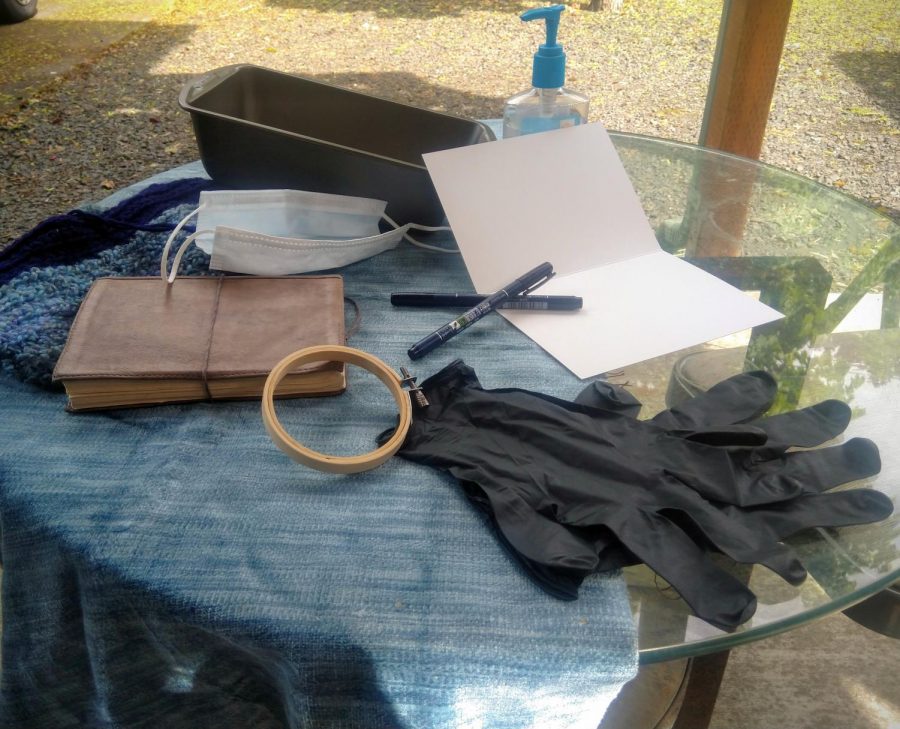Historical Craft in Quarantine
May 6, 2020
When I knew that my Spring Break plans would need to be postponed, I decided to find something to read. I began listening to an audiobook of Little Women, and as I filled my time with crafting and cleaning, I couldn’t help but find ways to relate to these American Victorian Era girls.
From Little Women, to My Antonía, Little House on the Prairie or even Tom Sawyer, I always used to be intrigued by the storybook lives of children like this.
Of course, their tales don’t tell the whole story of their time, but they give us an interesting window to peer through.These children had no television; no internet; and no way to travel much further than the neighbor’s yard. And reading these accounts now, they show such clear themes of isolation.
All over Social Media, folks are sharing the artwork they’re creating while we all stay inside to avoid the spread of COVID-19.
People are sewing themselves face-masks to go out in public; repairing clothing so as to avoid shopping unnecessarily; and picking up new hobbies like knitting or painting.
People are making music; writing poetry; and sending letters to one another.
As a society, we are rediscovering what we can do to keep ourselves occupied. Crafting between hours of work or school, or perhaps hoping to find a few moments quiet amongst an unusually full household. We are creating art to send to the working people for whom we are so grateful.
So what do we find hidden in stories of children from times past? What did they do that we might expect to see resurface?
The first thing I found striking when contemplating this question was textile crafts. The children in these stories (particularly girls who stayed around the house) spend their time repairing their skirts and gloves, knitting socks, sewing dolls and embroidering handkerchiefs.
Not only do these children use sewing and knitting for the practical purposes of repairing clothes or making bags, they also frequently give gifts to people they appreciate using their skills in crafting.
Characters embroider handkerchiefs and knit scarves for one another at the holidays, and when they are given a gift by a neighbor they knit slippers as a way to say “thank you.” They create baubles and ornaments to give to their friends, and find creative ways to have fun with a practical skill.
I can’t help but be reminded of people in today’s quarantine learning to repair their clothing, as well as sewing masks for neighbors and friends. And it is clear to see why we would be inclined to hone a skill which offers such practical benefits and such diverse possibilities.
The second thing I noticed while thinking of these stories was the way the children entertained one another. In these books, it is very common not only to “play pretend,” but also to put on performances for one another, go ice skating in the winter, sing together, and write letters to the friends they couldn’t visit.
Although the parallels aren’t perfect, I’ve noticed a surprising amount of these ideas to be similar to what I’m seeing today as well.
TikTok, a relatively new social media platform, is being used to act out plays for one another, and to share in performance virtually. Groups are creating Zoom conference calls to sing together, and people are singing as a community from their porches and balconies.
Roommates and families are going on more walks, runs, and bike rides to exercise together, and people are taking up paper crafts and typography to write letters to the friends they cannot see.
The final thing I noticed from these stories is food. Similar to textiles, food is a constant in society, and an unavoidable necessity. So it’s no wonder that, with limited access to restaurant food and a bit of time on their hands, people are learning the art/science of bread baking, experimenting with more elaborate dishes, or decorating cakes and cookies just for fun.
Of course a lot has changed since the time of Little Women, and much of it has been for the better. But since many people’s situations are mirroring more closely to the necessitated isolation of the past, it’s fun to look back and see what artistic inspiration might be found there.


